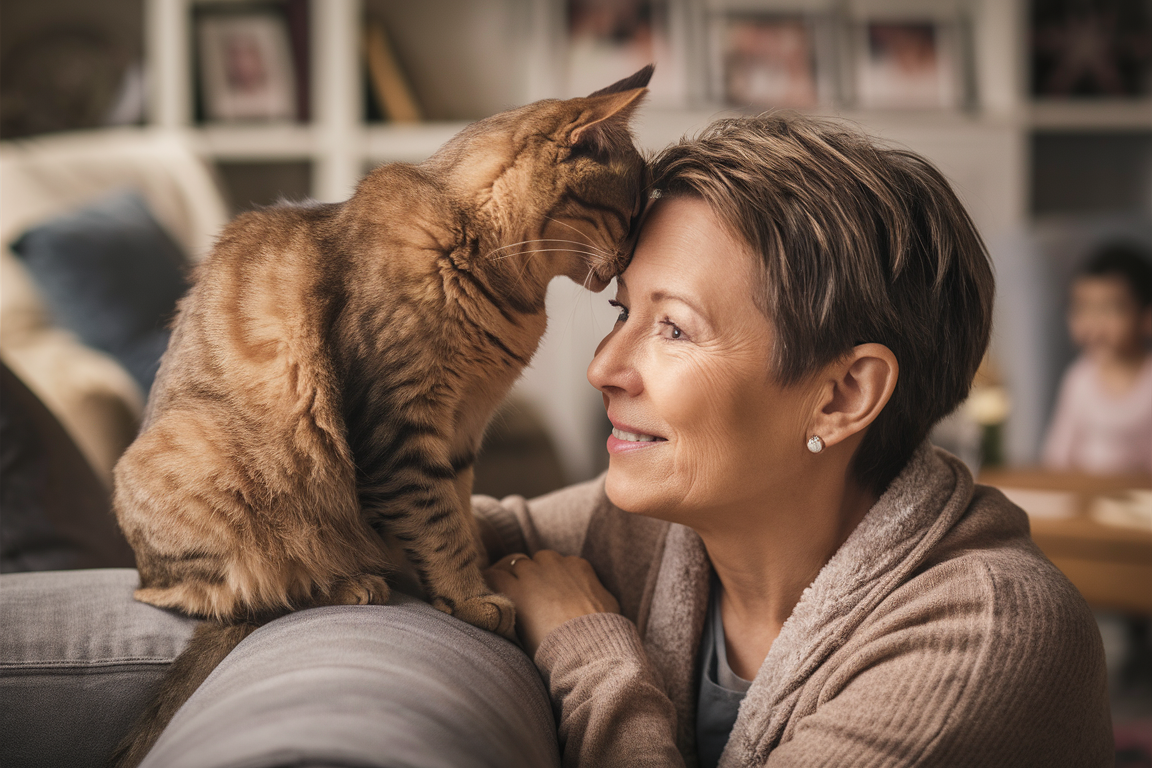Ever wondered why your cat gently bumps its head against you? This behavior, known as “bunting,” holds fascinating insights into the feline world. Let’s explore why cats head-butt and what it signifies.
The Charm of Cat Head-Butting
Cats, with their unique quirks, often head-butt their owners. This gentle nudge isn’t random; it’s a form of communication. When your cat bumps its head against you, it’s expressing affection. It’s like a furry greeting card saying, “I like you.”
Head-butting isn’t reserved for humans. Cats bump heads with each other to strengthen social bonds, saying, “You are my friend.” So, when your cat head-butts you, it’s speaking in a special feline language of trust and friendship.
The Science of Scent and Pleasure
Cats have scent glands on their heads, especially around their cheeks. When they head-butt, they’re marking their territory. This behavior is their way of claiming ownership, saying, “You belong to me.” While this might sound possessive, it’s an endearing way for your cat to connect with you.
Head-butting also releases endorphins in cats, making it pleasurable. It’s a blend of marking territory and feeling good, providing dual benefits for your furry friend.
Building Bonds Through Head-Butts
Head-butting signifies trust and affection. Cats are naturally cautious, so when they head-butt you, they’re letting down their guard. This gesture means they feel safe and secure with you, a huge compliment from such independent creatures.
This motion also strengthens your bond with your cat. Just as humans use handshakes and hugs to connect, cats use head-butts. It’s a tool for communication and bonding, making each head-butt a cherished moment.
The Silent Feline Love Tap
Cats use head-butting to interact meaningfully with their human family. Unlike meowing or purring, head-butting is a silent, powerful display of emotion. The intention remains the same: to connect with you.
For many cat owners, the head-butt is a comforting ritual, a tangible sign of their cat’s comfort and safety. This quiet bonding moment strengthens your relationship.
Why Your Cat Targets Your Head
Your face is often the most accessible part of your body, especially when sitting or lying down. By head-butting your head, your cat makes direct, personal contact.
The head is also significant for scent marking. When cats press their heads against yours, they leave their scent close to your scent glands, reinforcing the bond between you and making your cat feel more secure.
Additionally, head-butting your skull is a way for your cat to get your attention. This behavior often precedes other interactions, like petting or feeding. Your cat knows a head-butt is a sure way to get noticed.
Cracking the Feline Code
Head-butting is instinctive, used by wild cats to communicate and mark territory. Domesticated cats retain this instinct and use it with their human companions. Kittens head-butt their mothers and siblings, learning it’s a way to show affection and build social bonds.
Each cat is unique; some may head-butt frequently, others rarely. The frequency and intensity can vary, but the message is the same: affection and trust. So, the next time your cat gives you a gentle head-butt, appreciate the love and connection it signifies. Now you understand the significance of this behavior, you can cherish these moments even more. When you receive that next gentle nudge, know it’s your cat’s way of saying, “I love you.”
